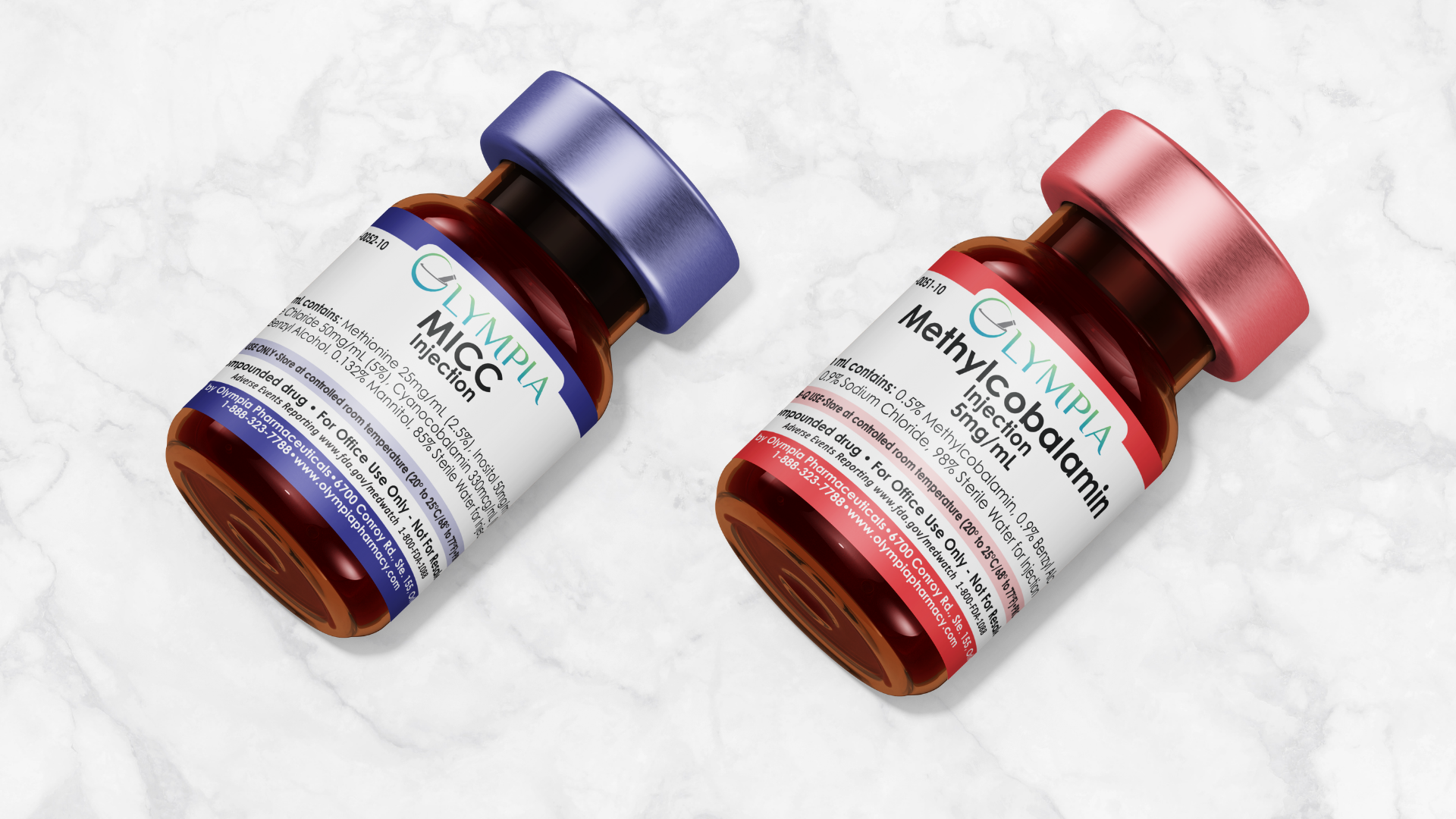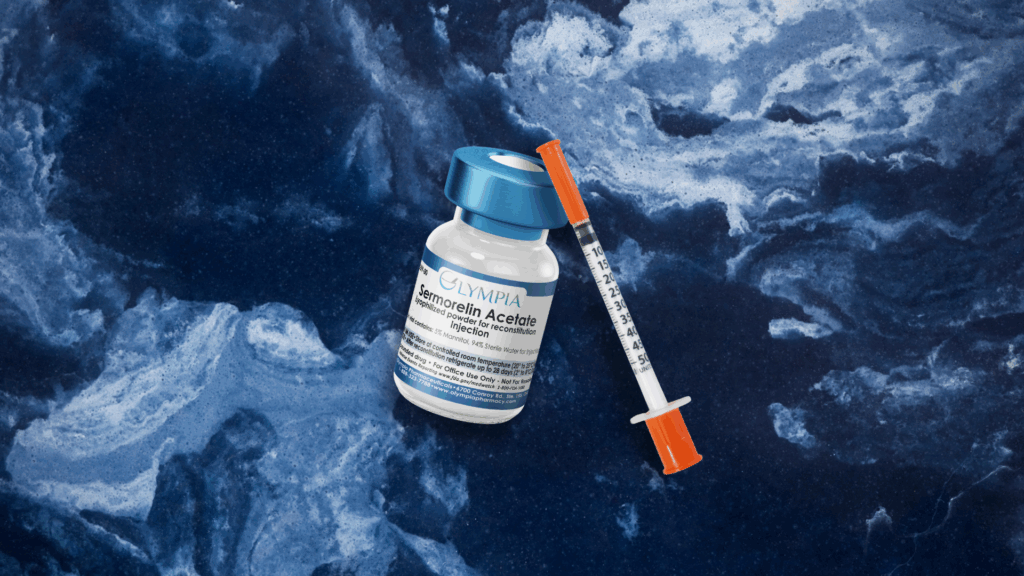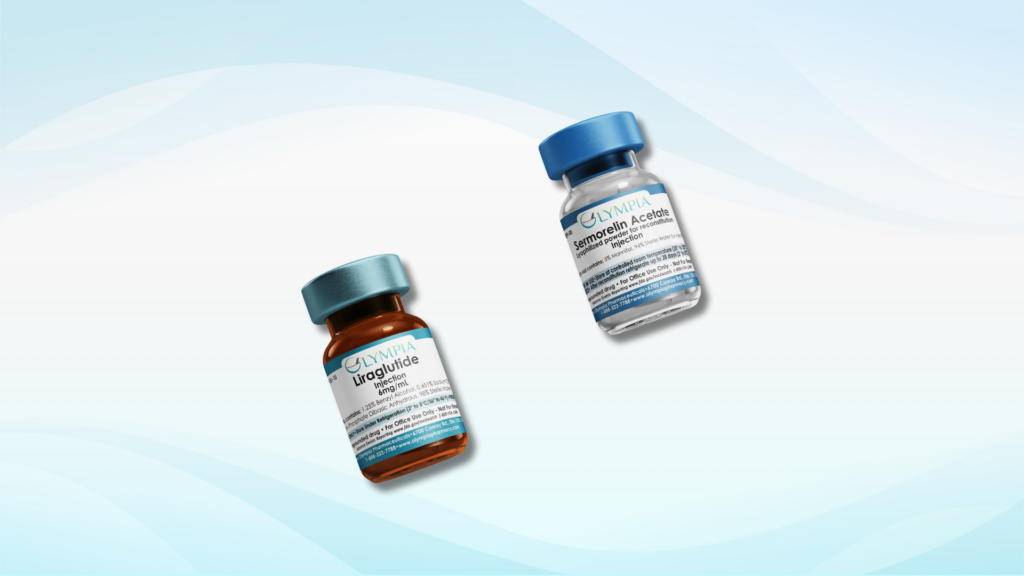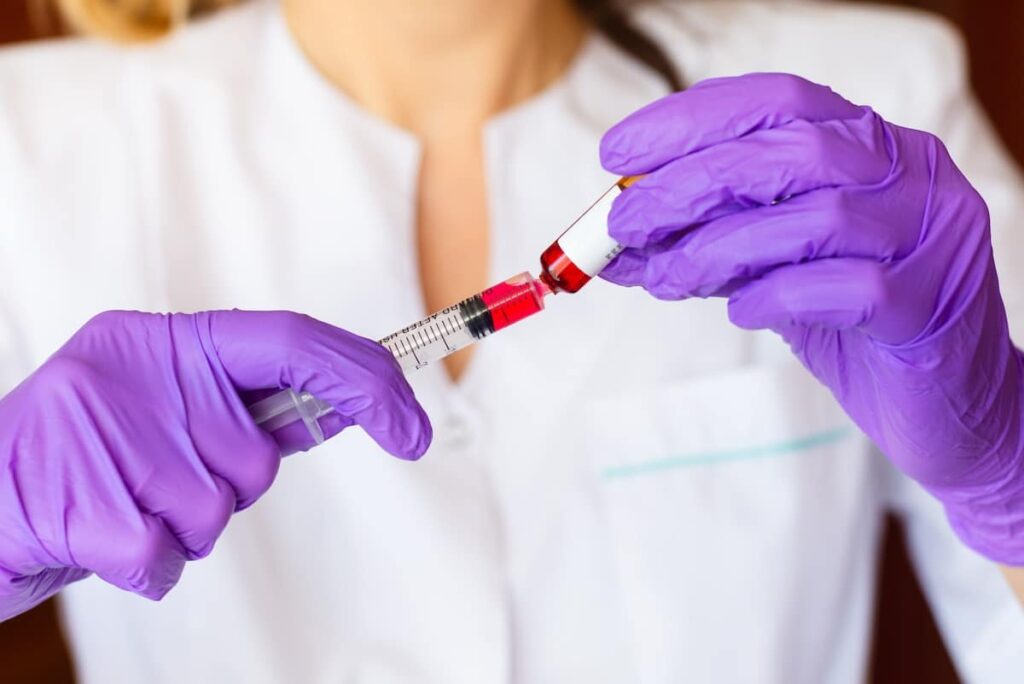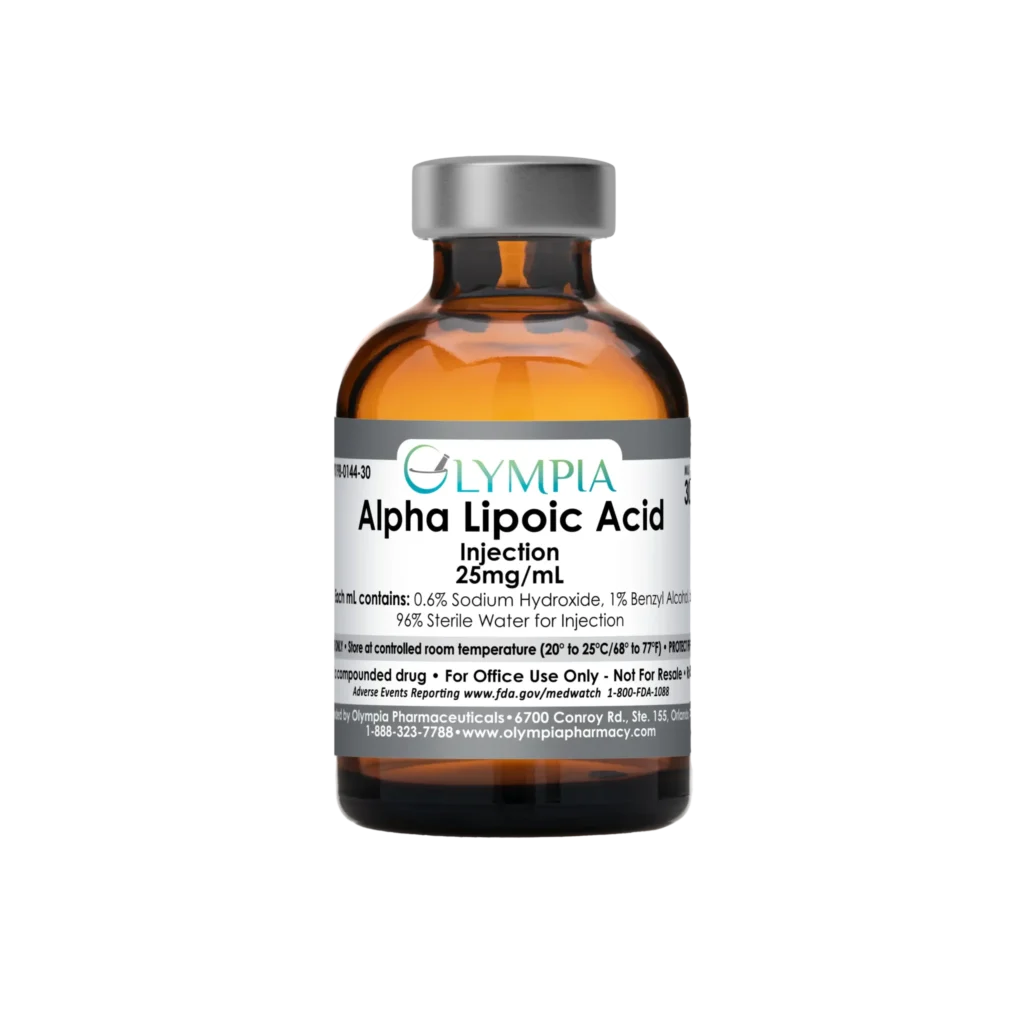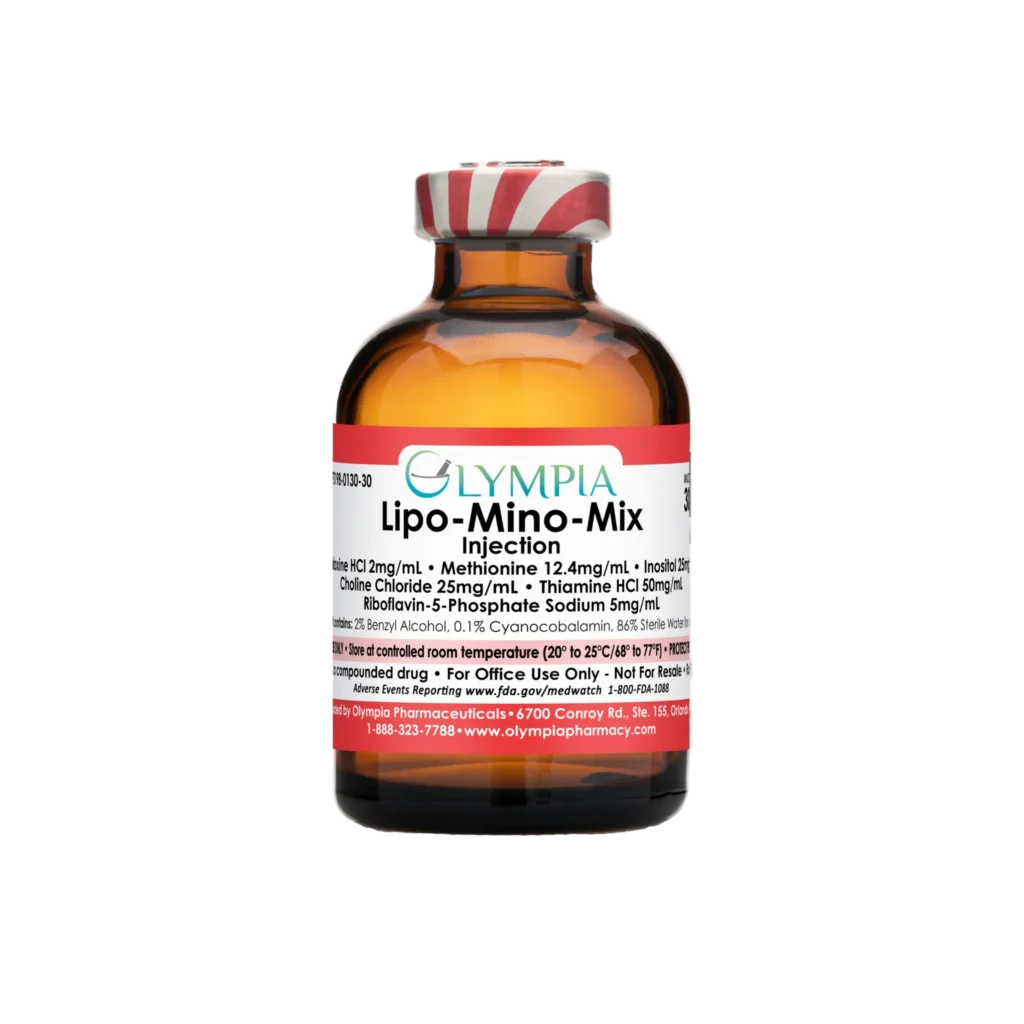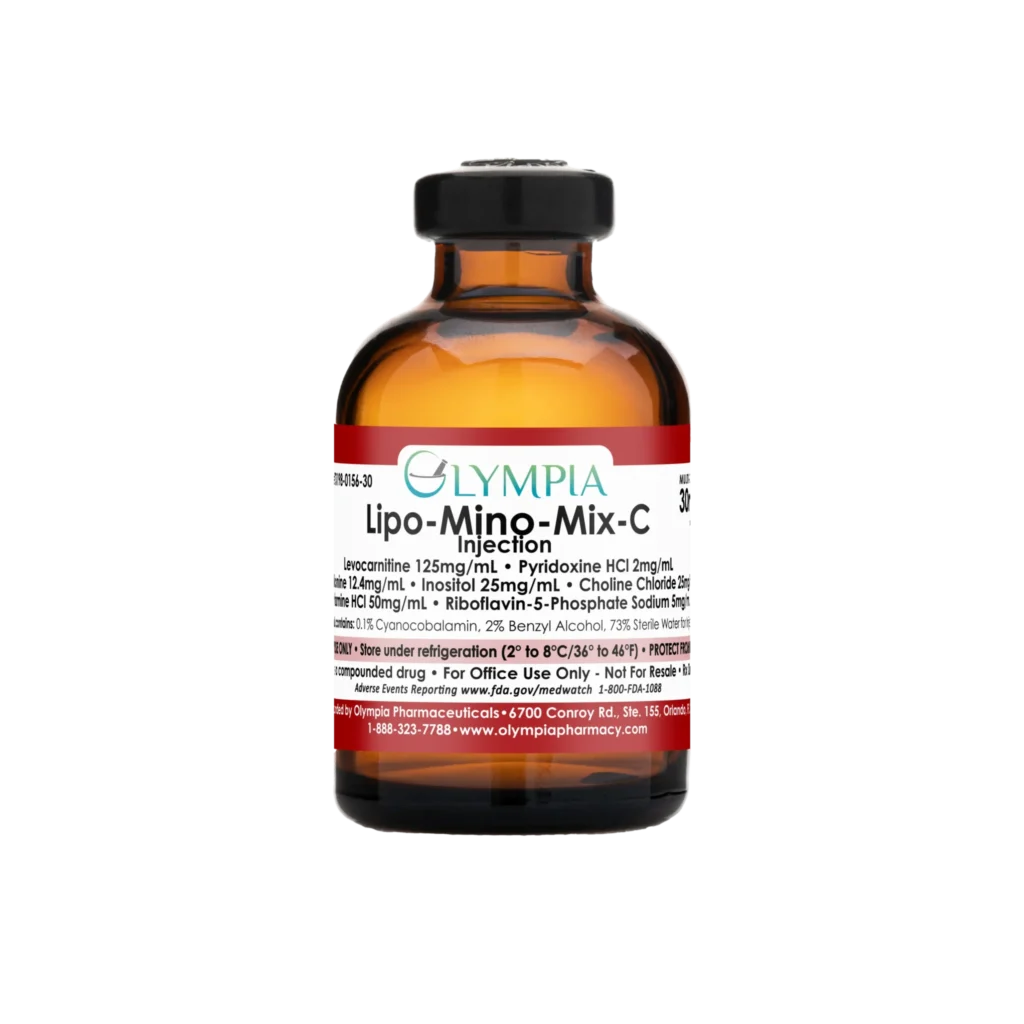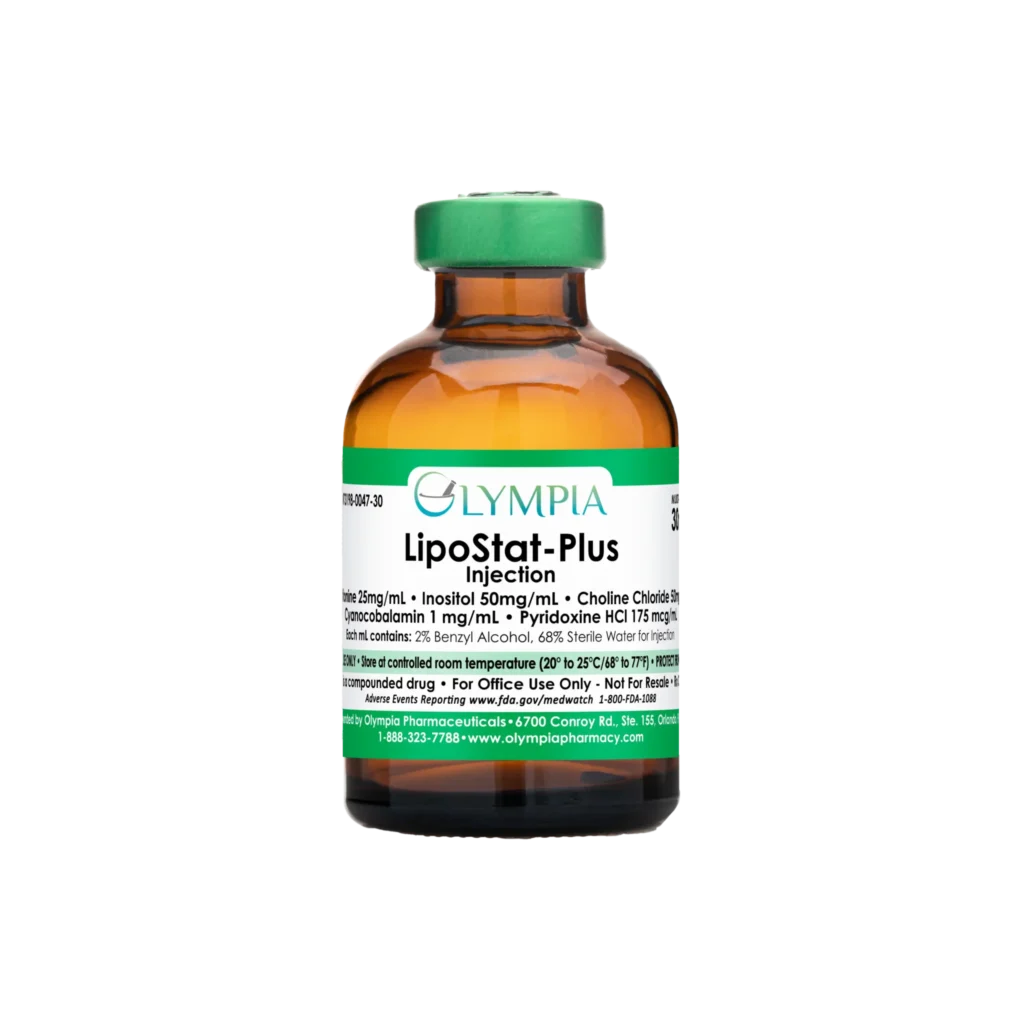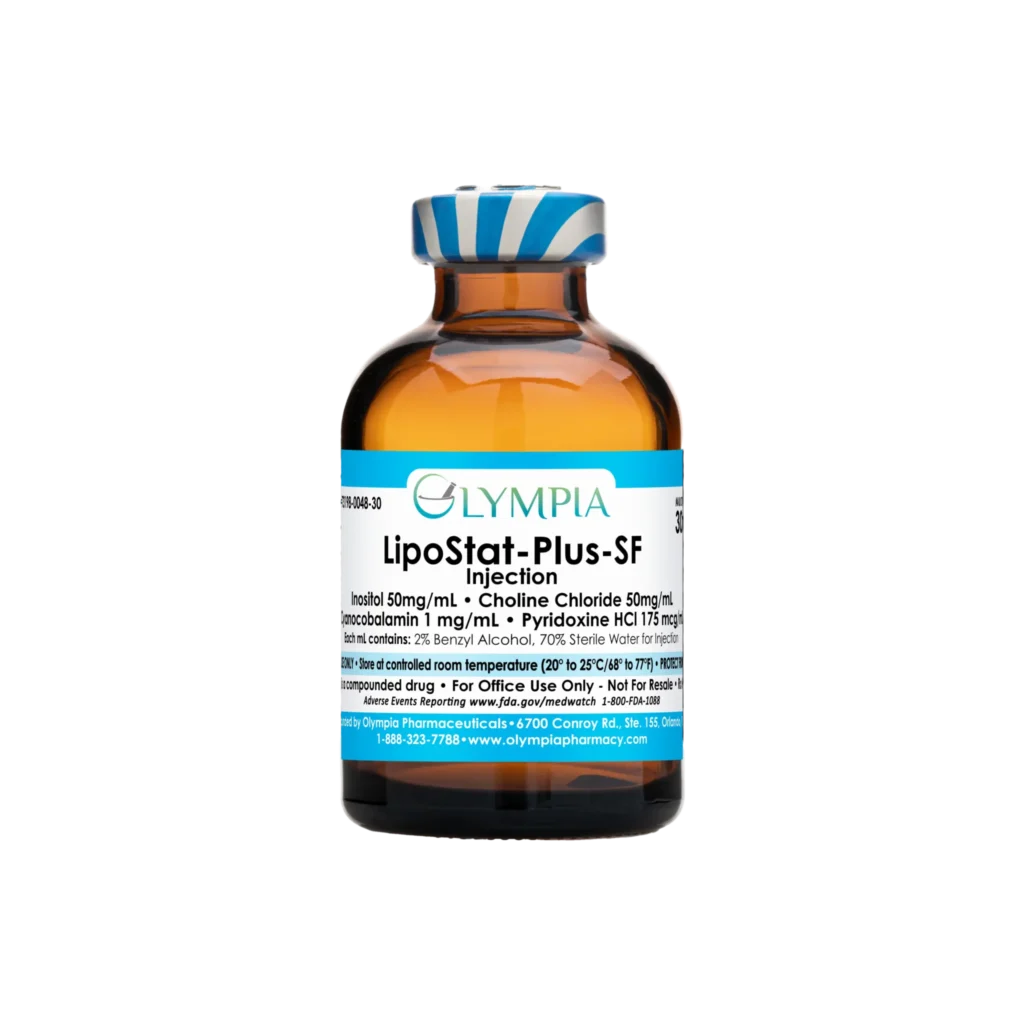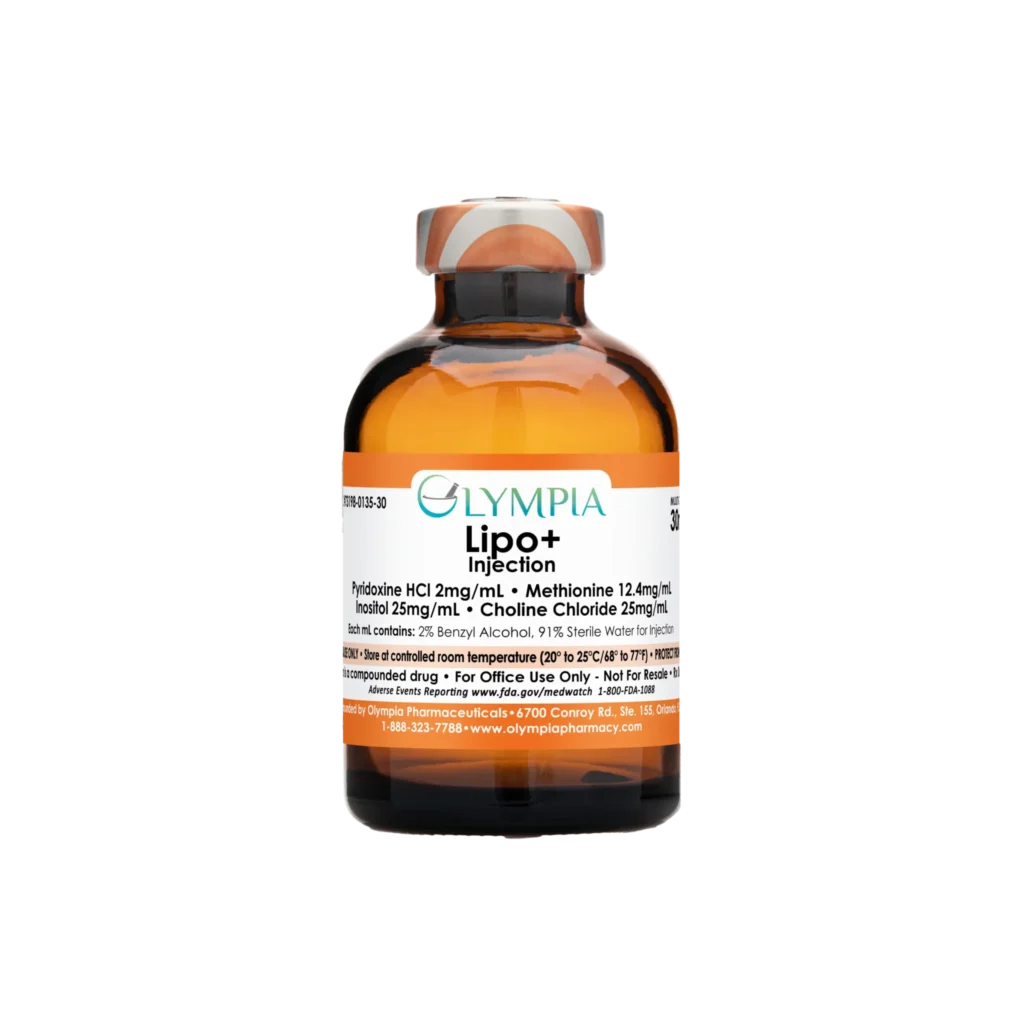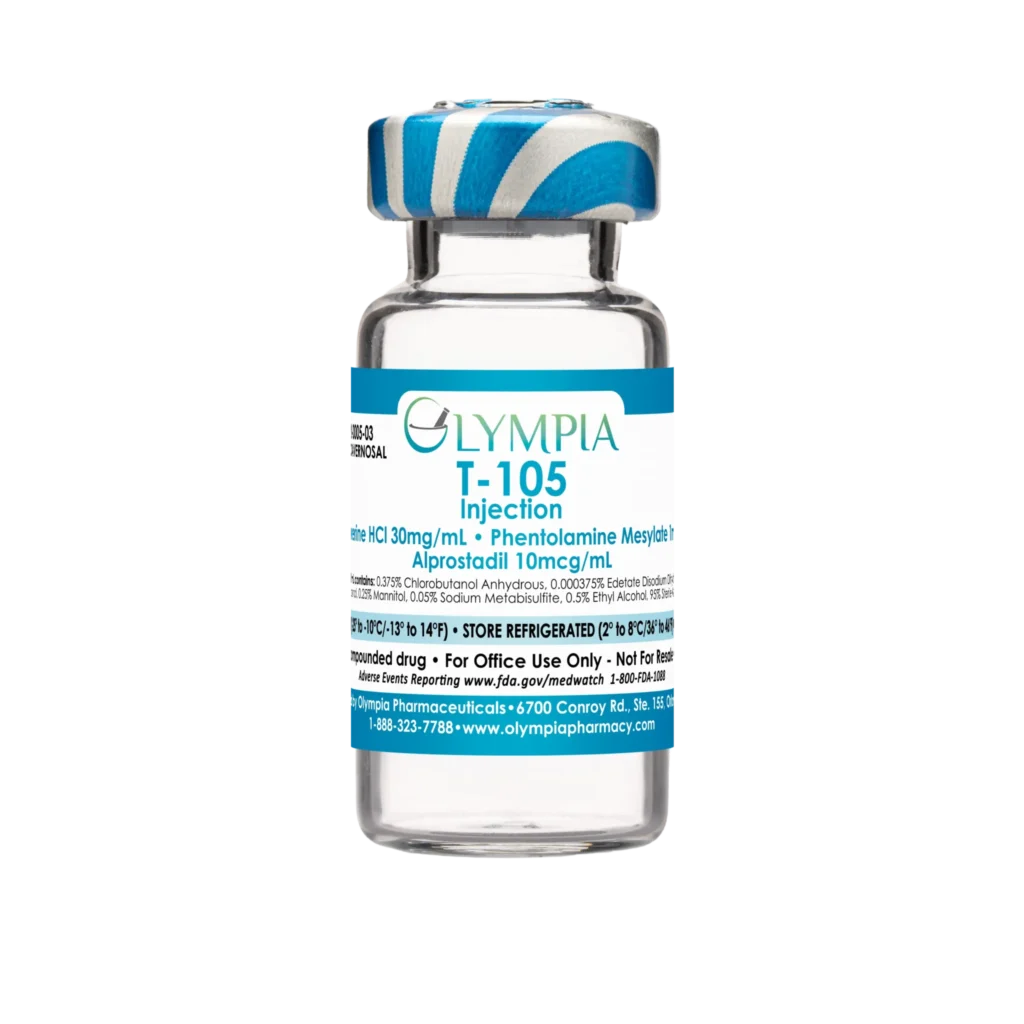If you’ve reached your goal weight using GLP-1 medications, congratulations! That’s no small feat. But as you prepare to stop treatment, one big question looms:
Will I gain all the weight back after stopping GLP-1s?
The answer depends on what you do next.
While it’s true that some individuals experience weight regain after coming off GLP-1 therapy, it’s not inevitable. With the right tools and support, you can maintain your weight and protect the progress you’ve made.
Common Concerns About Weight Regain After GLP-1s
It’s very common to worry about gaining weight back after stopping GLP-1 medications. And research shows that for many people, some weight regain does happen. That’s because these medications work by reducing appetite and helping you feel full longer, so when you stop taking them, your hunger may return, and this can make it harder to stick to a lower-calorie routine.
Obesity is a long-term, chronic condition, and just like other chronic health issues, it often requires ongoing support. By understanding what factors contribute to weight fluctuations, you can take steps to maintain your progress and continue feeling your best.
What Happens When You Stop GLP-1 Therapy?
GLP-1 medications, such as liraglutide, work by reducing appetite, slowing digestion and regulating blood sugar. But when the medication is discontinued, those effects gradually wear off. Some common challenges during this transition include:
Increased Hunger or Cravings
One of the first changes many people notice is an increase in appetite. Without the appetite-suppressing effect of GLP-1s, hunger cues can come back quickly and feel more intense. Some individuals may feel like they’re constantly hungry, especially if their body is trying to regain lost weight, a biological survival mechanism known as “weight set point theory. This rebound in appetite can lead to eating more calories than your body needs, causing weight to creep back up.
Slower Metabolism
When you lose weight, especially if it happens quickly, your metabolism often slows down. This is partly because the body now requires fewer calories to maintain a lower weight, a phenomenon sometimes referred to as metabolic adaptation. Without the metabolic boost from GLP-1s, your energy expenditure may drop, making it easier to regain weight.
Loss of Focus on Lifestyle Changes
Sometimes, the reliance on medication unintentionally overshadows important habits like healthy eating and regular exercise. If patients haven’t spent time building healthy habits during their program, weight regain will be more likely when the medication is stopped.
Emotional Eating Triggers Returning
For many, GLP-1s helped take the emotional edge off food decisions by minimizing cravings and reducing reward-based eating. Once off the medication, old habits like stress snacking or eating out of boredom can creep back in, especially if emotional eating patterns were never fully addressed during treatment.
These shifts can make it easier to slip back into old habits and harder to maintain weight loss. But don’t panic. This is where having a solid, sustainable maintenance plan becomes essential.
8 Keys To Maintaining Weight Loss After Stopping GLP-1 Therapy
1. Keep Up Healthy Habits From Treatment
Reaching your goal weight is just the beginning. Now, it’s about sustaining the habits that got you there. Think back to the habits you developed while using GLP-1 medication. Were you eating smaller portions, cutting back on sugary drinks, planning meals or tracking your weight regularly? These behaviors played a key role in your success, and continuing them will help support long-term results.
It’s easy to celebrate your success by loosening the reins, but consistency is key for maintenance. Some people find using a food journal or an app to log meals and weight can keep them accountable during the transition off medication.
2. Follow a Balanced, Satisfying Diet
Focus on a nutritious eating pattern you can stick with for the long run. That means building meals with a balance of lean proteins, high-fiber whole grains, healthy fats, fruits, and vegetables. These foods are rich in nutrients and help you feel full on fewer calories, which is important for weight maintenance.
Protein plays a key role in helping you feel satisfied and preserving muscle mass, especially after weight loss. But don’t forget that carbohydrates and fats are also important. Carbs provide the energy your body and brain need to function well, especially if you’re active. Healthy fats, such as those found in avocados, olive oil, nuts, and seeds, help support hormone health and keep you feeling full between meals.
As your body adjusts after weight loss, you may not need as much food as you did before. A lower body weight often means a slower metabolism, so portion control becomes more important. If you’re unsure how to structure meals or track your intake, working with a registered dietitian can provide helpful guidance that aligns with your needs.
3. Be Mindful of Hunger Signals
One of the biggest changes after GLP-1 therapy is the return of natural hunger cues. Because GLP-1s suppress appetite, many patients haven’t had to “tune in” to hunger or fullness in months.
Now’s the time to reestablish that connection with your body. Pay attention to physical hunger vs. emotional or situational eating. Try slowing down during meals, avoiding distractions like screens and stopping when you feel satisfied (not stuffed). It may take some practice, but mindful eating can be one of the most powerful tools for long-term weight control.
4. Stay Physically Active
Exercise is your ally in weight maintenance. In fact, research has shown that people who incorporate consistent exercise may maintain more weight loss after stopping GLP-1 therapy. One study found that patients who combined their weight-loss medication with a structured exercise routine were four times more likely to keep at least 10% of their weight off a year after stopping, compared to those who did not exercise.
Regular physical activity not only burns calories but also helps counteract the metabolic slowdown that can occur after weight loss. Both cardio (aerobic exercise) and strength training are beneficial, as cardio helps burn fat, while strength training builds muscle mass, which can in turn boost your resting metabolism.
You don’t need to train like an athlete. Even brisk walking, resistance training or moderate cardio a few times a week can help maintain your metabolism and muscle mass. The key is consistency and finding movement you enjoy so it becomes a sustainable part of your routine.
5. Prioritize Sleep
Don’t underestimate the power of good sleep for weight control. Inadequate sleep can disrupt hormones that regulate hunger and fullness (ghrelin and leptin), increasing your appetite. It also saps your willpower and energy, making it harder to exercise or resist junk food. One Mayo Clinic study found that people who slept too little and had free access to food ate more calories and gained more fat, especially around the belly.
Think of sleep as part of your weight maintenance plan, just like diet and exercise. Strive for 7-9 hours of quality sleep per night. Keep a consistent sleep schedule and create a calming bedtime routine.
6. Manage Stress
For many people, stress leads to emotional or mindless eating — reaching for comfort foods, snacking out of habit, or skipping meals and then overeating later. These behaviors can easily derail the healthy routines you built during GLP-1 treatment and lead to weight gain.
To keep your post-GLP-1 progress, adopt stress-reduction habits that work for you. This might be mindfulness meditation, deep breathing exercises, yoga, journaling or even just walking outside in nature. Staying socially connected with friends or support groups can also buffer stress. If you notice stress or emotional ups and downs affecting your eating, consider talking to a counselor or joining a weight maintenance support group.
7. Track Your Progress and Patterns
Monitoring your weight isn’t about obsessing over the number on the scale. It’s about staying aware of small shifts so you can course-correct early if needed. Whether you prefer weekly weigh-ins, taking progress photos or journaling how you feel physically and emotionally, regular check-ins give you valuable insight into what’s working and what needs adjusting.
Many factors influence weight maintenance, and recognizing patterns can help you stay ahead of potential setbacks. If you’re unsure how to interpret those trends, consulting with your healthcare provider can provide added clarity and guidance. They can help identify whether changes are normal or signal a need for extra support, and suggest interventions that fit your goals.
8. Use Supportive Therapies to Bridge the Gap
When you stop GLP-1 medications, your body may still need support adjusting to its new “normal.” This is where targeted therapies like lipotropic and wellness injections may make a difference. These products are designed to support metabolism, boost energy and promote fat utilization, helping you maintain your weight without relying solely on diet and exercise. Think of it as a bridge between active weight loss and long-term maintenance, especially during the critical months right after stopping GLP-1 therapy.
How Can Lipotropic Injections Help with Weight Maintenance?
Lipotropic injections are designed to aid in fat breakdown, aid your metabolism and support long-term weight management. They contain nutrients and amino acids that work together to help support your body’s fat metabolism and potentially enhance your energy levels. Here’s a closer look at the types of lipotropic injections offered by Olympia:
Lipo Mino Mix
A powerful blend of B vitamins, amino acids and fat-burning compounds designed to help maintain energy and metabolism. Includes B6, B1, B2, methionine, inositol and choline. Also available as Lipo Mino Mix C with added L-carnitine for enhanced fat-to-energy conversion.
Lipo Plus
Formulated for medically supervised weight management. Combines potent ingredients like B6, methionine, inositol and choline to help support metabolism.
Lipo Stat Plus / Lipo Stat Plus SF
Ideal for active individuals, this formula may support metabolism and energy using inositol, choline and B6. The SF version is a sulfa-free option.
MICC Injection
A concentrated injection designed to accelerate fat metabolism and increase energy levels. Includes methionine, inositol, choline and cyanocobalamin (B12).
Vitamin B12 Injections
Olympia offers three forms of B12: cyanocobalamin, hydroxocobalamin and methylcobalamin. Each may support metabolism, red blood cell formation and energy production. These may be helpful in offsetting fatigue and maintaining physical and mental performance during your weight maintenance phase.
L-Carnitine Injection
An amino acid derivative that may help convert stored fat into usable energy. L-carnitine may support endurance, recovery and overall fat metabolism.
Sermorelin
A growth hormone-releasing therapy that can aid in preserving lean muscle mass and supporting metabolism as you age. While not a direct weight loss solution, it may help support several metabolic functions tied to long-term weight control.
Vitamin D3 Injection
Vitamin D may play a role in hormone balance, bone health and potentially reducing body fat. Supplementing with D3 may help support your overall metabolic wellness after GLP-1 therapy.
Your Weight Loss Journey Isn’t Over — It’s Just Evolving
GLP-1 medications helped as you worked toward your goals. Now it’s time to protect the results you’ve achieved. Remember, obesity is a chronic, complex condition, and long-term success isn’t about willpower alone. It requires ongoing care, support and the right tools to stay on track.
Olympia’s full lineup of lipotropic and wellness injectables is designed to support your body through this next phase. These solutions may help aid metabolism, sustain energy and reinforce healthy habits as you transition off GLP-1s.
Talk to your provider or wellness clinic about incorporating Olympia’s post-GLP-1 support into your routine. With expert care, you can protect your progress and feel your best for the long haul.
[button url=”https://www.olympiapharmacy.com/weight-management/”]Explore Olympia’s Weight Management Solutions[/button]
Resources
1. Ganipisetti VM, Bollimunta P. (2023). Obesity and Set-Point Theory [Updated April 25, 2023]. In: StatPearls [Internet]. Treasure Island (FL): StatPearls Publishing; 2025–. Available from: https://www.ncbi.nlm.nih.gov/books/NBK592402/
2. Most J, Redman LM. (2020). Impact of calorie restriction on energy metabolism in humans. Experimental Gerontology, 133, 110875. https://doi.org/10.1016/j.exger.2020.110875
3. Jensen SBK, et al. (2024). Healthy weight loss maintenance with exercise, GLP-1 receptor agonist, or both combined followed by one year without treatment: A post-treatment analysis of a randomised placebo-controlled trial. eClinicalMedicine, 69, 102475. https://doi.org/10.1016/j.eclinm.2024.102475
4. Malloy T. (2022, March 28). Lack of sleep increases unhealthy abdominal fat. Mayo Clinic News Network. https://newsnetwork.mayoclinic.org/discussion/lack-of-sleep-increases-unhealthy-abdominal-fat/
5. Kumar R, Rizvi MR, Saraswat S. (2022). Obesity and stress: A contingent paralysis. International Journal of Preventive Medicine, 13, 95. https://doi.org/10.4103/ijpvm.IJPVM_427_20
